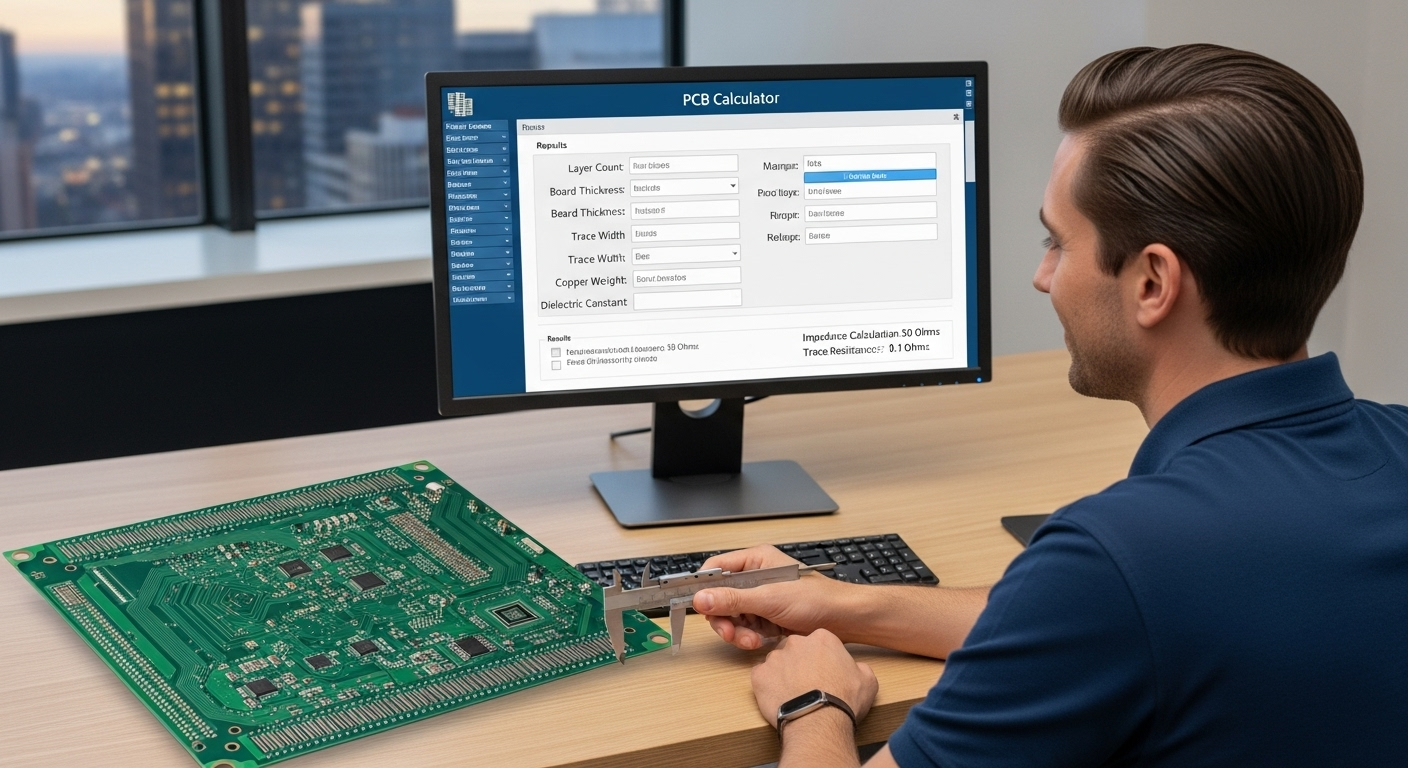Printed circuit boards (PCBs) are the backbone of every electronic device, from hobby projects to industrial equipment. One of the most overlooked yet critical factors in PCB design is trace width. If traces are too narrow, they can overheat, cause voltage drops, or even lead to complete board failure. That’s why designers rely on a PCB Trace Width Calculator to determine the correct width for safe and reliable performance.
At Megabyte Circuit Systems, our PCB Calculator makes this process straightforward, helping hobbyists, students, and engineers design boards that meet both performance and safety requirements.
In simple terms, PCB trace width refers to the thickness of the copper pathway that carries current across the board. Just like water pipes need to be wide enough to handle flow without bursting, traces need to be wide enough to safely carry electrical current.
If the trace width is too small, it can’t carry enough current without overheating, which reduces the durability and safety of the PCB. Wider traces, on the other hand, handle higher currents better and improve long-term reliability.
The width of a trace affects multiple aspects of PCB performance. Too narrow, and it risks:
To avoid these risks, designers follow industry standards like IPC-2221, which provide formulas and guidelines. But manually applying these calculations is complex, which is why calculators are preferred.
A PCB Trace Width Calculator is a tool that determines how wide a trace should be for a given current, copper thickness, and temperature rise. Instead of going through complicated math, you enter a few values and the calculator gives instant results.
Most calculators provide:
This makes design faster, more accurate, and aligned with industry best practices.
To use the calculator, you typically enter:
For example, if you input 1A current, 1 oz copper, and allow a 10°C rise, the calculator might show that a 10 mil (0.25 mm) wide trace is required. This ensures your board will carry the current safely without overheating.
Different calculators serve different needs:
Megabyte Circuit Systems PCB Calculator – beginner-friendly, accurate, and designed to simplify both cost and trace width calculations.
These cases show why calculators are essential; what works for a hobbyist project may not be safe for industrial boards.
Even with calculators, designers sometimes miscalculate. Common mistakes include:

Using a calculator provides several advantages:
To get the most reliable results:
While many calculators exist, the Megabyte Circuit Systems PCB Calculator is designed to be more practical for everyday use. It is:
Try the Megabyte Circuit Systems PCB Calculator today to design safer and more reliable boards.
PCB trace width is more than just a design detail it determines whether your board will work safely and reliably. Calculators simplify the process, saving time while ensuring accuracy. By using tools like the Megabyte Circuit Systems PCB Calculator, you can design boards that meet performance standards and avoid costly errors.
Whether you’re a beginner or a professional engineer, the right trace width calculation makes all the difference in PCB safety and performance.
C/10, Yogeshwar Estate, B/H Madhuram Estate, Nr. Vishala Estate, Sardar Patel Ring Rd, Odhav, Ahmedabad, Gujarat, Ahmedabad - 382430, Gujarat (India)
Copyright © 2025. Megabytes Circuit Systems All rights reserved.
Powered by FrogMEE Tech
